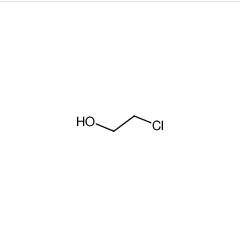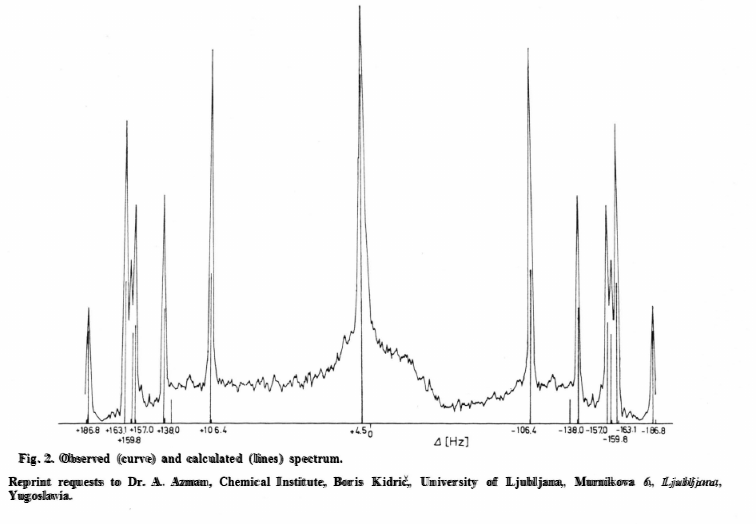2-Chloroethanol -The Last Dinner: Fatality of 2-Chloroethanol Intoxication
Time:2021/7/30 16:45:26
Abstract
Objective: 2-Chloroethanol (2-CE) is a solvent with a LD50 of 58 mg/kg orally in rats. In rare condition, grape farmers in Taiwan apply it on grapevines to hasten sprouting and can land themselves in potentially lethal conditions. Severe intoxication presenting with hypotension, respiratory failure, seizure, coma or mortality can occur in 24 hours even only skin or inhalational exposure. It is hard to make the correct diagnosis in cases of unknown contamination history due to lack of specific clinical signs/symptoms or availability of routine laboratory tests. Cases report: In July 2011, two couples (2 males 2 females, 40-58 years old) in Nantou County of Taiwan suffered from nausea, vomiting, shortness of breath, consciousness change and suspected convulsions 6-12 hours after dining and drinking together. One case was noted to be dead on arrival in the emergency room, and the other three rapidly progressed to coma, hypotension, cardiac arrest in 1-3 hours, and dead eventually after resuscitation. The most important laboratory finding was metabolic acidosis with blood pH value 7.223 to 7.291. This lethal outbreak caused disquiet in the public with respect to food and drink. The grape sprouting agent, 2-CE was proved to be the offender with high concentrations of 2-CE (2 to 15.3 mg/L in heart blood) and its metabolite (chloroacetate 232.6 to 590.5 mg/L in heart blood) detected in patients’ samples by Gas chromatography-mass spectrometry two weeks later. Conclusion: These cases demonstrated that 2-CE might be listed in table of deliberate poisons and should be ruled out in cases of mass poisoning.
Background
Нere are several toxins had been used as weapons to kill someone not turn a hair, such as cyanide. 2-chloroethanol (2-CE, Ethylene Chlorohydrin, CAS.NO107-07-3) was once a solvent used for industrial productions in large scale and was noted to be highly toxic in mammalian before [1]. It is a colorless liquid with faint, ether-like odor. In literature, there was few 2-CE intoxication cases reported with unknown mechanisms [2,3]. 2-CE has been used in Taiwan for sprouting on grapevines with better harvesting for more than 20 years. Farmers cut old branches of vine every 3cm by knife and stick some colored and diluted 2-CE on it, and vines grow along the grid which is higher than the height of people. Grapevine application carried an accidental risk of inhalation or dermal exposure but also intentional ingestion of 2-CE caused severe intoxication. In report of Deng et al., 17 cases were recorded in 14 years with around 40% of mortality rate [4]. No pathognomonic signs, symptoms or ordinary laboratory tests could be used in clinical dL??erentLDl diagnosis, and delayed diagnosis might impede criminal investigation. Here, we reported an outbreak of deadly 2-CE intoxication in two couples due to drink maliciously adulterated wine in a dinner.
Case Report
Case Report In the night of July 6, 2011, two couples of friends had their dinner and drank together D?er farm work. Someone had complained of bitter tasting of one bottle of rice wine but without any immediate discomforts during meal. Unfortunately, abrupt onset of nausea, vomiting, short of breath and consciousness change developed successively from the midnight to the early morning of next day. Нe first one is a 37 years old woman. She su??ered from nausea, vomiting, shortness of breath and consciousness change D?er midnight. She was noted to be in shock (blood pressure 67/35 mmHg) and deep comatose states at 4 am while her arriving emergency room of a local hospital. She was referred to a medical center with the impression of acute myocardial infarction due to dL??used ST-T wave change of electrocardiogram and found to be cardiac arrest while arrived there. Return of spontaneous circulation was noted D?er minutes of cardiopulmonary resuscitation. But she was declared to be dead at eight o’clock in the morning even under extracorporeal Membrane Oxygenation (ECMO) treatment. Нe second one was a 48 years old woman. She su??ered from nausea, vomiting, abdominal pain, diarrhoea and shortness of breath at midnight, and was found to bedead at five o'clock in the morning when she was sent to the hospital. Нe third patient, the second one’s husband, was a 55-year old male. He was noted to be sick and weak at 4 am when he stayed in ambulance with his wife on the way of hospital. His blood pressure was noted to be 90/32 mmHg initially at emergency room, but his condition rapidly got downhill with restless, seizure, shock and deep coma. He died at about 8 o'clock D?er Lne??ectLve resuscitation. Нe last one was a 40 years old male. He experienced a sudden onset of dizziness, cold extremities, palpitations, vomiting and conscious change near 8 am of the second day morning while his wife was under resuscitation. About one hour later, he su??ered from profound shock and deep coma. ECMO therapy and the use of cyanide antidotes did not change the result. He passed away about 23 hours D?er exposure. Нe 4 patients all were subjected to autopsy and collected tissues fluLd for chemical assay. Only minimal change with mild tissue swelling, erythematous change over gastrointestinal wall and increased lung weight were found on gross. Нe pathological report exhibited pulmonary edema, enlargement of nucleus of cardiac myocytes, interstitial edema with cellular necrosis of intestinal mucosa and congestion of intestinal wall. Нere were no acute reactions on liver, pancreas and brain. Some laboratory findLnJs are summarized in Table 1. НLs incident had stirred up the issue of food safety due to suspected botulism mistaken by an emergency specialist, and peoples in the island were kept on tenterhooks for more than 2 weeks before it was cleared up to be crime. 2-CE and its metabolite were detected in patients’ tissues, blood and urine samples by gas chromatography-mass spectrogram.
Discussion
Нese four cases were finDll\ confirmed to be 2-CE intoxication due to drink the maliciously adulterated wine which was found contain 17.6% of 2-CE. Rapid progression and fulminant presentations indicate 2-CE might be one of the highest toxic chemicals and any types of contamination should be concerned. 2-CE is a glycol derivative, commonly used as a solvent in industry with sLJnLficDnt vapor pressure, and can be absorbed by inhalation, ingestion, or through the dermal route [2,5]. Its estimated acute oral LD50 to be 71-95 mg/kg for rats and 81-91 mg/kg for mice [6]. Some farmers in Taiwan applied 2-CE on grapevines to hasten sprouting and put themselves on the dangerousness of accident intoxication. Нere were several cases reported to Poison Center with severe or fatal intoxication D?er even though only skin or inhalation exposure [4]. Neurological and vascular toxicity were noted as the cardinal presentations in reported cases of severe 2-CE intoxication and would presented varied with unconsciousness, seizure, shock, and metabolic acidosis, also as these four cases. It is frustrated that there is no e??ectLvel\ and specLficDll\ antidote instead of the supportive care.
The toxic mechanism on human beings of 2-CE is still blurred and indistinct. In animal study, 2-CE is oxidized to chloroacetaldehyde (CAA) by alcohol dehydrogenase (ADH, EC 1.1.1.1) and subsequently to chloroacetate (CA) by aldehyde dehydrogenase (AL DH, EC 1.2.1.3) [7]. Both CAA and CA were found to be more toxic than the parent compound 2-CE [5,8]. In an isolated rat right atrium model study, CAA was suggested to be the toxic principle of 2-CE-induced cardiovascular toxicity which might be mediated by calcium channel and nifedipine protected against neuronal nitric oxide sybthetase (nNOS)-triggered cardiovascular e??ects [9,10]. CAA, as a major reactive metabolite of a vinyl chloride or anticancer drug ifosfamide, has also been noted to induce varied cytotoxicity through mitochondria respiratory chain inhibition, cellular glutathione depletion and other oxidative stress pathway [11-14]. Нese e??ects can cause damage in energy rich organs, such as brain, heart, and muscle skeletal system, and manifest as renal damage, unconscious, seizure, profound shock, metabolic acidosis, and dead in clinical cases [5]. CA is also demonstrated to induce oxidative stress causing the cellular glutathione depletion and the inhibition of the tricarboxylic acid cycle in mitochondria, which was accompanied by both p38-MAPK signal activation-regulated mitochondria-dependent and endoplasmic reticulum stress-triggered apoptotic pathway leading to neuronal cell death [15,16]. Large dose of monochloroacetate exposure in industrial setting had been found to induce severe hypoglycemia and lactic acidosis, which was suggested through Inhibits liver gluconeogenesis by inactivating glyceraldehyde-3-phosphate dehydrogenase in animal study [8].
Alcohol dehydrogenase inhibitors have been suggested as the potential antidote for 2-CE intoxication. But, alcohol had not proved to be e??ectLve in limited cases report [4]. Fomepizole (4-methylpyrazole) is a potently competitive inhibitor of alcohol dehydrogenase that a useful antidote for ethylene glycol or methanol poisoning, but should be initiated immediately to prevent toxic metabolite production that has accumulated [17]. Chen et al. [6] have reported that fomepizole can sLJnLficDnt increase median lethal dose (LD50) and reduce the acute toxicity of 2-CE, and decrease the plasma concentration of CAA in rat. But the role of fomepizole in 2-CE intoxication needs more clinical investigations.
Extension
LAB SPECIFIC OPERATING PROCEDURE (LSOP) for 2-Chloroethanol

Formula : C2H5ClO
Molecular weight : 80.51 g/mol
CAS-No. : 107-07-3
EC-No. : 203-459-7
Index-No. : 603-028-00-7
TRANSPORT INFORMATION DOT (US) UN number: 1135
Solvent:CDCl3; Reference=TMS; Temperature 297K
Class: 6.1 (3) Packing group: I Proper shipping name: Ethylene chlorohydrin Reportable Quantity (RQ): Poison Inhalation Hazard: Hazard zone B SECTION 2. OSHA’s
(GHS)-SDS INFORMA
1.OSHA’s (GHS)-SDS INFORMATION
Synonyms : (Ethylene chlorohydrin) 2-Chloroethanol is a chemical compound with the formula HOCH2CH2Cl and the simplest chlorohydrin. This colorless liquid has a pleasant ether-like odor. It is miscible with water. The molecule is bi-functional, consisting of both an alkyl chloride and an alcohol functional groups.
2.GHS HAZARD (H) CODES and PRECAUTIONARY STATEMENT (P) CODES
(H)/Hazard Statement (s)
H226 Flammable liquid and vapor
H290 May be corrosive to metals
H300 + H310 + H330 Fatal if swallowed, in contact with skin or if inhaled
GHS Classification in accordance with 29 CFR 1910 (OSHA HCS) Flammable liquids (Category 3), H226 Corrosive to metals (Category 1), H290 Acute toxicity, Oral (Category 2), H300 Acute toxicity, Inhalation (Category 1), H330 Acute toxicity, Dermal (Category 1), H310 Serious eye damage (Category 1), H318 Acute aquatic toxicity (Category 2), H401 Chronic aquatic toxicity Category 2), H411
(P)/Precautionary Statement (s)
P210 Keep away from heat/sparks/open flames/hot surfaces. No smoking
P260 Do not breathe dust/ fume/ gas/ mist/ vapors/ spray
3.H Nuclear Magnetic Resonance (NMR) Spectrum

![]()


 < /a>
< /a>